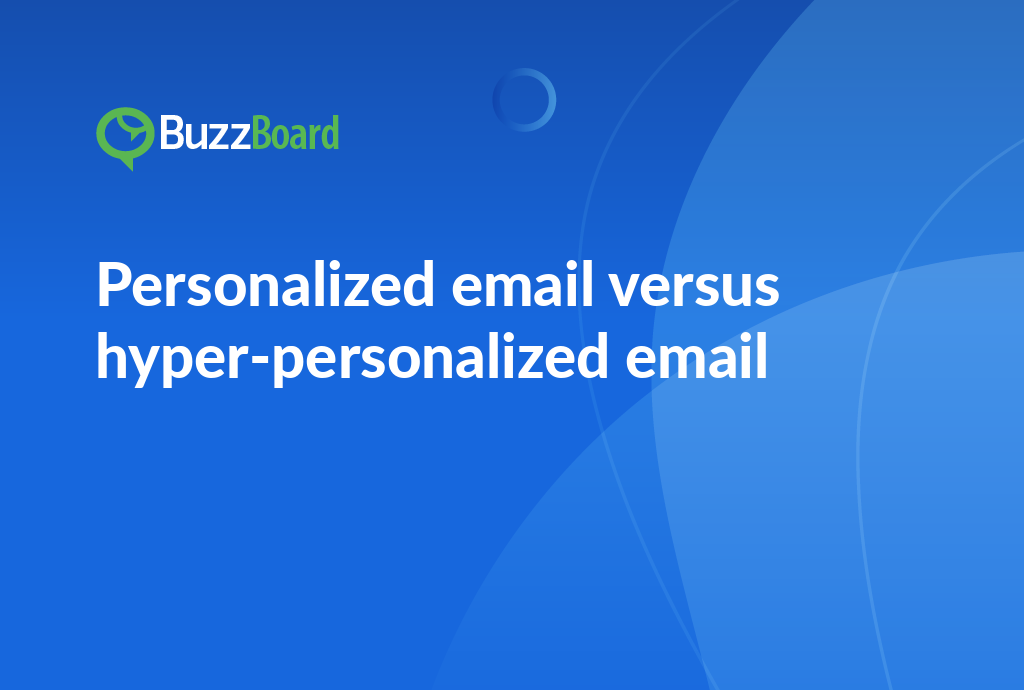What is a content calendar for small businesses? A content calendar is a strategic plan that helps small businesses organize and schedule their content creation, ensuring consistency and efficiency. To create a winning content calendar, small businesses should start by identifying their target audience, setting clear goals, and selecting the right content formats. They should also prioritize quality over quantity, focus on evergreen content, and regularly review and adjust their calendar. By following these steps, small businesses can create a content calendar that drives engagement, boosts brand awareness, and ultimately, grows their business.
The Importance of a Content Calendar for Your Small Business Clients
Understanding the importance of a content calendar can bring substantial benefits for small businesses aiming to boost their online visibility. A content calendar offers a comprehensive overview of your entire content marketing efforts, ensuring consistency, proper planning, and timely delivery. All these factors are vital in effectively managing content marketing for clients.
Two elements are essential when crafting a content calendar for small businesses: content scheduling tools and content marketing workflows. Content scheduling tools not only aid in planning and publishing content more efficiently, but they also offer valuable insights to enhance future content.
Effective content marketing workflows are the backbone of a successful content creation process. These workflows are a carefully crafted sequence of tasks that ensure seamless coordination, accountability, and optimal execution of crucial tasks. By integrating these workflows into your content calendar, you can guarantee a consistent and well-managed content marketing campaign that drives results.
A content calendar is more than just a tool for organizing your content; it’s a game-changer for businesses looking to elevate their marketing efforts. By implementing a content calendar, you can:
- Improve organization: A content calendar helps you keep track of your content creation, publication, and distribution, ensuring that your content is consistently published and reaches your target audience on time.
- Enhance efficiency: With a content calendar, you can streamline your content creation process, reducing the risk of delays, missed deadlines, and costly rework.
- Boost results: By planning and scheduling your content in advance, you can create a content marketing strategy that resonates with your audience, drives engagement, and ultimately, generates conversions.
In today’s competitive marketing landscape, a content calendar is no longer a nice-to-have, but a must-have for businesses looking to stand out from the crowd. By leveraging a content calendar, you can:
- Stay ahead of the competition: By planning and executing a well-structured content marketing strategy, you can outmaneuver your competitors and establish your brand as a thought leader in your industry.
- Increase brand visibility: A content calendar helps you create a consistent brand voice, tone, and messaging, which can lead to increased brand recognition and loyalty.
- Drive business results: By creating a content marketing strategy that resonates with your target audience, you can drive real business results, including increased conversions, sales, and revenue.
Given the transformative benefits of a content calendar, it’s time to dive deeper into the art of creating a content calendar that revolutionizes your content strategy. In our comprehensive guide, we’ll walk you through the step-by-step process of creating a content calendar that drives results, simplifies your content marketing efforts, and sets your brand up for success.
Steps on How to Create a Content Calendar for Small Businesses
Creating a well-structured content calendar is a key strategy for small businesses looking to streamline their content marketing workflows and manage content marketing for their clients efficiently.
Here’s a step-by-step guide on how to create a content calendar for small businesses:
For sales teams at digital marketing agencies that sell to small businesses, understanding these steps is pivotal in efficiently advising your clients. Use the insights from this guide to create a robust content marketing workflow that yields results.
Remember, the ultimate goal is to deliver valuable content that engages your audience and drives business growth.
Exploring Content Scheduling Tools to Help Create a Winning Content Calendar
Exploring content scheduling tools can be a transformative experience for salespeople at digital marketing agencies, particularly in establishing content marketing workflows that drive results. These innovative tools are designed to help manage content marketing for clients more efficiently and strategically, providing a solution to the age-old question: “How to create a content calendar for small businesses?” By leveraging these tools, agencies can ensure that their clients receive high-quality content marketing services that meet their unique needs and goals.
Content scheduling tools empower users to create, customize, and manage a content calendar with ease, allowing for better allocation and distribution of resources, tracking of deadlines, and maintaining consistent output. This is particularly crucial when working with small businesses that may not have the means for vast content development teams. By leveraging these tools, agencies can ensure that their clients receive high-quality content marketing services that meet their unique needs and goals.
Incorporating content scheduling tools into your content marketing workflows is essential for avoiding common pitfalls such as homeless content or missed deadlines. This ensures that your agency consistently delivers high-quality service to your small business clientele, building trust and credibility in the process. Tools such as Buffer, Hootsuite, and CoSchedule are great examples of such platforms that can help streamline content marketing efforts and prevent scheduling conflicts.
By keeping track of when and where content is published, these tools streamline content marketing efforts and prevent scheduling conflicts. They amplify your agency’s capability to manage content marketing for clients, enhancing its effectiveness and credibility. With content scheduling tools, agencies can:
- Create and customize content calendars tailored to each client’s unique needs and goals, ensuring that content is aligned with their marketing objectives and target audience.
- Track deadlines and ensure timely publication of content, eliminating the risk of missed deadlines and ensuring that content is published consistently.
- Manage multiple social media channels and publishing schedules, allowing for a unified content strategy across all platforms.
- Monitor and analyze content performance to optimize future content marketing efforts, providing valuable insights into what works and what doesn’t.
- Collaborate with team members and clients in real-time to ensure seamless content creation and publication, fostering open communication and ensuring that all stakeholders are on the same page.
By leveraging content scheduling tools, digital marketing agencies can elevate their content marketing game, providing small businesses with the high-quality content marketing services they need to thrive in today’s competitive market. With these tools, agencies can:
- Increase efficiency and productivity, allowing for more time to focus on high-level strategy and creative development.
- Improve content quality and consistency, ensuring that clients receive high-quality content that meets their unique needs and goals.
- Enhance client satisfaction and loyalty, providing a competitive edge in the market.
- Scale content marketing efforts, allowing agencies to take on more clients and projects without sacrificing quality or consistency.
- Stay ahead of the competition, leveraging the latest content marketing trends and best practices to drive results for clients.
Incorporating content scheduling tools into your content marketing workflows is essential for digital marketing agencies looking to elevate their content marketing game and provide high-quality services to small business clients. By leveraging these tools, agencies can streamline content marketing efforts, prevent scheduling conflicts, and deliver high-quality content that meets the unique needs and goals of each client.
The Role of Content Marketing Workflows in Managing Content Chaos
Content marketing chaos is a common affliction that can plague even the most well-intentioned small businesses and local enterprises. When tasked with handling content marketing for clients, it’s easy to feel overwhelmed by the sheer volume of tasks involved, from content ideation to distribution. However, by harnessing the power of content marketing workflows, businesses can streamline their processes, eliminate redundancies, and ensure consistency across all content channels.
The first step in taming the beast of content chaos is the creation of a content calendar. This essential tool allows businesses to plan and organize their content in advance, ensuring that their message is consistently delivered to their target audience. To create a content calendar, businesses should begin by outlining their content goals and identifying their target audience. What types of content resonate with their audience? What are their pain points and interests? By understanding their audience, businesses can create content that truly speaks to them.
Once the target audience is identified, businesses can start plotting their content distribution on the calendar. This involves deciding which types of content to create, when to publish them, and on which channels. For example, a business may decide to publish a blog post on a Monday, followed by a social media post on Tuesday, and a newsletter on Wednesday. By planning their content in advance, businesses can ensure that their message is consistently delivered to their audience, without overwhelming them with too much information.
In addition to creating a content calendar, investing in content scheduling tools can also significantly enhance a business’s workflow. Platforms like Hootsuite or Buffer allow businesses to schedule posts on multiple social media channels at particular times, ensuring regularity and uniformity in their content output. This not only saves time but also ensures that their content is consistently delivered to their audience, without the need for constant monitoring and updating.
Moreover, content scheduling tools can also help businesses to automate repetitive tasks, such as posting the same content on multiple platforms, or sending out regular newsletters. This can free up more time for businesses to focus on creating high-quality, engaging content that resonates with their audience.
Successful content management is not about relentless spamming or trying to be everywhere at once. Rather, it’s about intelligent planning and execution. By incorporating content marketing workflows into their marketing strategy, businesses can streamline their processes, eliminate redundancies, and ensure consistency across all content channels.
To achieve this, businesses should consider the following best practices:
- Define clear content goals and objectives: What do you want to achieve with your content marketing efforts? What are your key performance indicators (KPIs)?
- Identify your target audience: Who are you creating content for? What are their pain points, interests, and behaviors?
- Create a content calendar: Plan and organize your content in advance, ensuring consistency and regularity.
- Invest in content scheduling tools: Automate repetitive tasks and ensure uniformity in your content output.
- Focus on quality over quantity: Prioritize creating high-quality, engaging content that resonates with your audience, rather than churning out low-quality content for the sake of quantity.
- Monitor and measure performance: Track your KPIs and adjust your content marketing strategy accordingly.
By following these best practices and incorporating content marketing workflows into their marketing strategy, businesses can take their content marketing to the next level, engaging their audience and propelling engagement.
Case Study of Managing Content Marketing for Clients Successfully Using a Content Calendar
Creating a content calendar for small businesses is a crucial step in streamlining the content creation process, ensuring that your brand maintains a consistent and engaging online presence. A content calendar is a pre-arranged template that outlines what content should be produced, its publish date, and the promotional channels it will be distributed through. By having a clear plan in place, small businesses can alleviate the stress of last-minute content creation and ensure a steady stream of high-quality content that resonates with their target audience.
One of the primary benefits of using a content calendar is that it allows businesses to plan and schedule their content in advance. This means that instead of scrambling to come up with content at the last minute, you can take the time to research, write, and design your content in a more methodical and thoughtful way. This approach also enables you to ensure that your content is aligned with your business goals and target audience, increasing the likelihood of engagement and conversion.
In addition to the benefits of planning and scheduling content, a content calendar can also help small businesses to maintain a consistent social media presence. By automating publications on multiple platforms, content scheduling tools can help businesses to maintain a consistent flow of content, even when they don’t have the time or resources to manually post updates. This is particularly important for small businesses that may not have a dedicated social media team, as it allows them to maintain a professional and engaging online presence without requiring a significant amount of time or resources.
Another advantage of using a content calendar is that it provides businesses with valuable insights into the performance of their content. By tracking metrics such as engagement rates, click-through rates, and conversion rates, businesses can gain a better understanding of what types of content are resonating with their audience and what types of content are falling flat. This information can be used to tweak the content strategy, ensuring that future content is even more effective and engaging.
A case study of a small health food store that struggled with effective content marketing is a great example of the benefits of using a content calendar and content scheduling tools. Prior to implementing a content calendar and scheduling tool, the store was struggling to come up with content ideas and was finding it difficult to maintain a consistent social media presence. However, by developing a content calendar and using a scheduling tool, the store was able to plan and schedule its content in advance, monitor the performance of each post, and tweak its strategy to better engage its customers. As a result, the store saw a significant increase in engagement and conversion rates, and was able to establish itself as a thought leader in the health food industry.
For digital marketing agencies working with numerous clients concurrently, managing content marketing can be a daunting task. However, by developing a content calendar tailored to each client’s needs and utilizing efficient content scheduling tools, agencies can simplify this process and ensure that all content is relevant, timely, and engaging. This approach also enables agencies to provide their clients with valuable insights into the performance of their content, allowing them to make data-driven decisions and optimize their content strategy for better results.
In conclusion, creating a content calendar for small businesses is a crucial step in streamlining the content creation process and ensuring a consistent and engaging online presence. By planning and scheduling content in advance, small businesses can alleviate the stress of last-minute content creation and ensure that their content is aligned with their business goals and target audience. Additionally, content scheduling tools can help businesses to maintain a consistent social media presence, track the performance of their content, and tweak their strategy for better results. Whether you’re a small business or a digital marketing agency, implementing a content calendar and content scheduling tools can help you to achieve your content marketing goals and drive business results.
Conclusion
In conclusion, creating a winning content calendar for your small business is a crucial step in establishing a strong online presence and driving business growth. By following the steps outlined in this article, you can develop a content calendar that is tailored to your business goals, resonates with your target audience, and sets you apart from the competition.
Remember, a content calendar is not a one-time task, but an ongoing process that requires regular review and adjustment. Stay flexible, stay focused, and stay committed to your content strategy, and you’ll be well on your way to achieving your business objectives.
By conquering content chaos and creating a winning content calendar, you’ll be able to:
- Save time and reduce stress by planning and scheduling your content in advance
- Increase engagement and conversions by creating content that resonates with your target audience
- Boost brand awareness and establish your business as a thought leader in your industry
- Drive business growth and revenue by leveraging your content to attract and retain customers
Don’t let content chaos hold you back any longer. Take control of your content strategy today and start achieving your business goals tomorrow.









